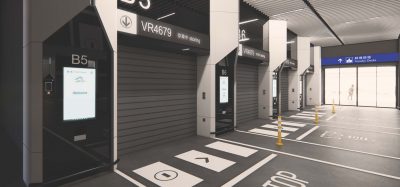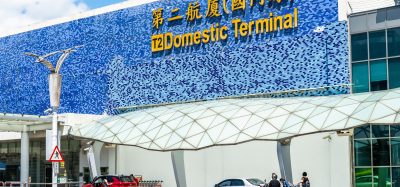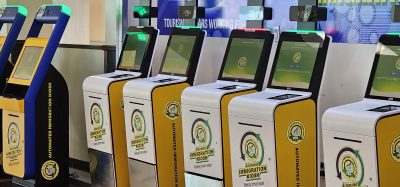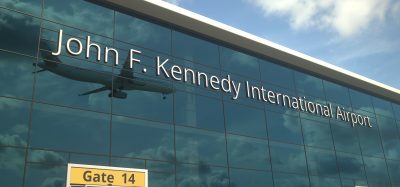The case for – Common Use Self Service
- Like
- Digg
- Del
- Tumblr
- VKontakte
- Buffer
- Love This
- Odnoklassniki
- Meneame
- Blogger
- Amazon
- Yahoo Mail
- Gmail
- AOL
- Newsvine
- HackerNews
- Evernote
- MySpace
- Mail.ru
- Viadeo
- Line
- Comments
- Yummly
- SMS
- Viber
- Telegram
- Subscribe
- Skype
- Facebook Messenger
- Kakao
- LiveJournal
- Yammer
- Edgar
- Fintel
- Mix
- Instapaper
- Copy Link
Posted: 17 March 2006 | Paul Behan, Project Manager – CUSS, IATA | No comments yet
Paul Behan considers the advantages of Common Use Self Service kiosks and how sharing the cost of their installation, can mean sharing the benefits. The case for Common Use Self Service (CUSS) kiosks for check-in has always been robust. The concept is simple. Installing check-in kiosks that can be shared by a number of airlines eases access for customers, reduces hardware and maintenance costs for airlines and allows airports to make better use of valuable real estate. IATA estimates that on average CUSS saves airlines US$2.50 per check-in. That adds up to US$1 billion in annual industry savings with 40 per cent market penetration.
Paul Behan considers the advantages of Common Use Self Service kiosks and how sharing the cost of their installation, can mean sharing the benefits.
The case for Common Use Self Service (CUSS) kiosks for check-in has always been robust. The concept is simple. Installing check-in kiosks that can be shared by a number of airlines eases access for customers, reduces hardware and maintenance costs for airlines and allows airports to make better use of valuable real estate. IATA estimates that on average CUSS saves airlines US$2.50 per check-in. That adds up to US$1 billion in annual industry savings with 40 per cent market penetration.
CUSS, part of IATA’s five-pronged ‘Simplifying the Business’ initiative, has made significant strides forward since its project launch in 2004. Last year, the focus was on raising awareness, generating initial commitment from airlines and airports and demonstrating the huge benefits of CUSS to all industry players. Year-end progress reports clearly indicate momentum for Common Use Self Service Check-in (CUSS) is building across the industry.
The building blocks are firmly in place. An industry standard and recommended practice was published in 2003 and an additional recommended practice that will enable a common user interface – similar to the approach used for ATMs – was published in November 2005. This speaks to the importance of making the technology used in all ‘Simplifying the Business’ initiatives as accessible and intuitive as possible. Consumers want things simple. That means that the industry must introduce common industry standards at all times to avoid confusion and that we must translate technology into convenience for the passenger and value for the airline.
CUSS does both and as a result is rapidly being rolled out on a global scale. Since early 2005, IATA has signed MOUs with seven airports and Ground Handler Swissport to roll out CUSS on a progressive basis. More agreements are in the works. That surpassed IATA’s 2005 goal of five. What’s more, it is up and running in 17 airports world-wide with over 35 additional airports actively working on CUSS projects.
Off-site check-in
Interestingly, most of these projects are also looking at off-site CUSS check-in. That includes hotel lobbies, train and bus stations and airport car rental offices. This delivers additional convenience to passengers and eases congestion at airports. While it’s early days for off-site check-in, all trends point to it becoming increasingly common in the years ahead.
CUSS is part of an emerging self-service strategy that is being implemented by airlines on an increasingly wider scale. It includes the use of self-service check-in at home bases and hubs where they are the dominant carrier and CUSS solutions, where it is both regionally and commercially attractive. Other elements of this include at-home check-in and the issuance of Bar Coded Boarding Passes, the promotion of which is another IATA Simplifying the Business project.
The pace will pick up in 2006 with the goal being to move from pilot projects and test sites to an aggressive global expansion programme. Late last year, IATA’s Board of Governors set a target for the roll-out of CUSS at 15 new locations by the end of 2006. And switching gears from early adoption to global expansion will require industry support.
International interest
To date, CUSS and self-service generally has largely been concentrated in North America and Europe. Carriers are now looking to extend that service offering to their customers wherever they operate, but to do so sensibly in these times of maximising investment.
To tackle regional gaps and to expand the reach of CUSS, the IATA StB CUSS project team is developing a Regional Strategy for CUSS. It is designed to ensure that all major hub airports have the opportunity to take advantage of the benefits of CUSS and also to support a better investment strategy for the future of check-in facilities. The days of simply adding more physical check-in space as the only solution to accommodate traffic growth are gone forever. Airports need to demonstrate that all potential solutions are subject to a rigorous check with their airline customers.
To assist airports in this assessment, IATA will soon release a CUSS implementation guide for airlines, airports and ground handling service providers to ensure that all CUSS projects are managed for an efficient and cost effective solution.
A broad based education programme is also being developed and delivered through the StB team comprised of 140 worldwide. It will take the form of StB airports workshops, the StB conference in May 2006, conferences relating to StB initiatives and individual one to one meetings with the appropriate stakeholders in support of the regional plans.
Airline interest is also on the rise. More than 40 airlines now offer CUSS and another 100 airlines are actively developing it. Additionally, over 210 airlines are investigating CUSS as a check-in channel for their passengers. Key to this progress has been close collaboration between airports and airlines – it is a true win-win situation.
For airlines, the ability to provide a common service offering across their route network at a lower cost, rather than providing dedicated self-service kiosks through a large capital-intensive programme, is appealing. It targets their desire to offer consistency at a time when customers are demanding a better quality of service and the need to maximise investment.
The future
For airports, a consistent product offering is equally appealing. The ability to provide a pleasant experience in an airport is at best a wish and at worst a dream. Passengers are eager to reduce the time spent ‘processing’ at check-in. Airport managers understand that time-consuming check-in processes do little to encourage travellers to spend freely at airport retail outlets. But the cost of making that customer happy has a price. Therein lies the challenge. Does an airport forego the minor cost of implementing CUSS to maximise the dwell time of happier customers who will be more amenable to part with their cash? Or do they try to claw back the investment through additional user charges?
The dichotomy for airports and airlines is that one seeks to recover costs on an investment whilst the other seeks to have that investment provided for on their behalf. There is a better way. In the world of common use systems, it means each partner sharing the costs and the benefits to gain an advantage, without alienating the other. The failure of not seeking this mutually beneficial solution will only serve to heap further costs on airlines, already dedicated to simplifying their business and seeking cost reductions in non added-value processes. A cooperative approach by both parties is vital to ensure the success of self-service now and in the future.
Bar coded boarding passes reaching critical mass
Eric Leopold, Project Manager – BCBP, IATA
Five years ago the prospect of passengers printing their boarding passes at home and by-passing check-in was considered somewhat futuristic. Today, the use of bar coded boarding passes is on the rise, driven by building consumer demand, emerging industry self-service strategies and cost cutting imperatives.
IATA estimates that BCBP will save US$3.50 per home check-in. That saving goes up to over US$5 per passenger without checked baggage. With a market penetration of 20%, annual industry savings will total US$500 million. These cost reductions are the result of better use of airport space, productivity improvements and the replacement of expensive ATB equipment with printers and readers that are one-tenth the cost.
While these are still early days for BCBP, use of the technology is slowly building as airlines and airports begin to understand the value of the concept. Additionally, the creation of an industry standard has kindled interest. Launched just over a year ago, at the request of IATA’s Board of Governors, IATA’s 2D bar code standard offers a significant upgrade from 1D.
Currently there are various types of bar coded boarding passes in play. Most of them are of the 1D variety that feature very limited information storage space and as such, cannot be used for interline journeys. Adding to the problem is the fact that 1D has no single standard and can only be issued for the first leg of a multi-carrier journey. 2D bar codes, which are commonly used on everything from driver’s licenses to cell phone batteries to telephone bills, remedy this situation as they can accommodate the passenger data needed for multi-leg journeys on one document.
There are a number of key target groups for BCBP: airlines and airports currently not using the technology at all and those that are using 1D or non-standard formats. Airline alliances are another market for this product to enable a print-at-home boarding pass product for use across their networks. The business cases for each, while different, are still appealing in an industry that relies on global connectivity.
Where CUSS was just a year ago – on the verge of global expansion – is where bar coded boarding passes are today. Only 1 year after the publication of the standard, 9 airlines have launched 2D bar coded boarding passes. Almost all have reported excellent customer feedback and financial results, while 65 more airlines will implement it within the next 2 years. According to site inspections conducted by IATA and member airlines, approximately 60 of the world’s top 100 airports have 2D bar code readers installed.
While there is a groundswell of interest, some regions lack expertise and resources. IATA will hold ‘Simplifying the Business’ workshops in 2006 to close these gaps. IATA has also produced a cost-benefit analysis and an implementation guide for airlines, airports and ground handlers worldwide that are interested in BCBP but need more information to make a decision.
It’s abundantly clear that what appeared to be science fiction not that long ago, is quickly becoming today’s reality.


















